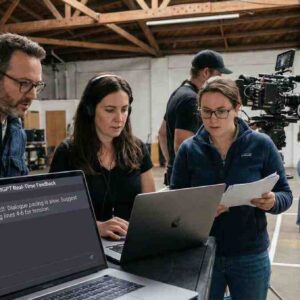In a country where quality education often comes with a hefty price tag, a quiet but powerful transformation is reshaping the way low-income students access learning opportunities. EdTech platforms are proving that a child’s future shouldn’t be determined by their family’s financial status. With innovative solutions, affordable models, and a relentless drive to democratize education, these platforms are making quality learning accessible to the underserved.
But let’s address the elephant in the room: Is “low-cost” really enough to change the game for India’s millions of low-income students?
From subscription-based access to free learning apps, EdTech companies are leveraging technology to bring education to those who need it most. Platforms are offeringfree recorded classes, low-cost live sessions, and AI-driven adaptive learning toolstailored to individual learning paces. Some go the extra mile, creating courses in regional languages to ensure inclusivity. The promise is bold—students from economically weaker sections (EWS) can compete with their peers from elite schools for a fraction of the cost.
Take for instance the rise ofpay-as-you-learn modelsor no-commitment monthly subscriptions that eliminate the financial burden of long-term packages. Many startups are also collaborating with NGOs and government bodies to identify and support low-income learners through scholarships and free course materials. These efforts are opening doors for students who were once excluded from quality education.
But the rosy picture of affordability often obscures the real challenges. The journey from affordability to accessibility is riddled with obstacles. Low-cost doesn’t always translate to impactful learning, especially when students lack the devices or internet connectivity to fully utilize these platforms. Families earning less than ₹10,000 per month struggle to prioritize education technology over basic necessities like food and shelter.
And then there’s thedigital literacy gap.For many first-generation learners, navigating an online platform isn’t intuitive. Imagine being a 14-year-old in a low-income household trying to figure out app interfaces with no prior exposure to smartphones. The affordability of EdTech loses its sheen when the users don’t know how to maximize its potential.
Another pressing concern is the one-size-fits-all approach many platforms take, which rarely caters to the unique challenges faced by low-income learners. Without proper mentoring and hands-on guidance, these students often fall behind, unable to catch up despite the availability of resources.
Yet, the spark of change is undeniable. Across the country, there are stories of students who, with the help of affordable EdTech, are breaking the cycle of poverty. From government school students acing competitive exams to young minds in remote villages mastering coding skills, these platforms are planting the seeds of transformation.
However, the question remains: Are EdTech platforms doing enough to adapt to therealitiesof low-income students, or is the affordability narrative merely a surface-level fix?Affordable learning must go beyond discounts—it must address connectivity, accessibility, and engagement.
The potential is massive, but to truly empower low-income students, EdTech companies must shift gears. They need to invest in robust offline solutions, deeper community engagement, and models that prioritize mentorship over metrics. Only then can the promise of low-cost education translate into arealchange, where every student—not just a lucky few—gets the chance to thrive.
The revolution of affordable EdTech has started. The challenge now? Turning affordability intoimpact.













